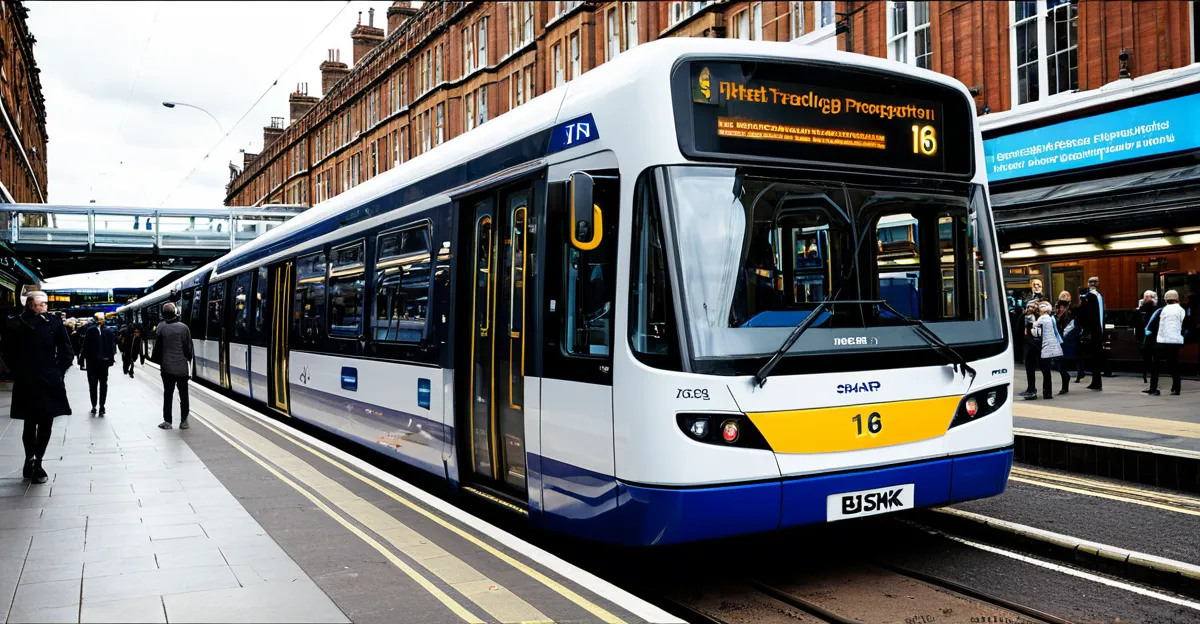Up-to-date Advancements Transforming UK Public Transport
Recent years have showcased remarkable latest UK public transport innovations aimed at enhancing efficiency and passenger experience. Key trends revolve around digitalisation, sustainability, and intelligent infrastructure, each shaping a more modern transit landscape. Notably, new technologies developed between 2023 and 2024 have been deployed rapidly across the UK, signaling a substantial leap forward.
Among breakthroughs are smart ticketing solutions, including contactless payments and mobile apps, which simplify journeys and reduce queues. The expansion of zero-emission vehicles, especially electric bus fleets, directly addresses environmental targets, aligning transport sectors with sustainability goals. Additionally, integration of AI and IoT is a game changer for real-time travel information and adaptive route management.
Topic to read : How Does the UK Media Landscape Change the Course of Politics?
These 2024 transport updates are significant because they reflect a coordinated push by government and private sectors, backed by funding and strategic planning. Passengers benefit from smoother, greener travel with reduced delays and improved accessibility. The timeline for rolling out these innovations is ambitious, affirming the UK’s commitment to future-ready public transit.
Ultimately, the fusion of technology and policy in the latest UK public transport innovations is set to redefine how people move, making public travel more attractive and environmentally responsible.
Have you seen this : How is the UK supporting technological innovation?
Electric and Hydrogen Buses Modernising Transit Networks
The rollout of electric buses UKwide marks a pivotal shift in sustainable transit. Cities like London and Manchester lead with substantial fleet upgrades, replacing diesel with zero-emission electric and hydrogen buses. This transition supports climate goals by cutting greenhouse gas emissions and reducing urban pollution.
Hydrogen buses complement electric variants, offering longer ranges and faster refueling, ideal for busy routes. Their deployment in pilot projects demonstrates feasibility for wider adoption. These buses produce only water vapor, elevating air quality while maintaining operational efficiency.
Such fleet modernization addresses key environmental challenges, aligns with 2024 transport updates, and enhances urban transit reliability. Passengers benefit from quieter rides and improved service frequency due to lower maintenance downtime compared to traditional buses.
Governments and transport operators coordinate investments to accelerate this shift. Timelines targeting full electrification of major city fleets underscore commitment to sustainability. This proactive approach not only reduces carbon footprints but fosters innovation within the UK’s public transport sector.
Ultimately, the integration of electric buses UK and hydrogen alternatives transforms transit networks, reinforcing environmental priorities and passenger satisfaction through cleaner, advanced vehicle technologies.
Digital Ticketing and Contactless Payment Systems
The latest UK public transport innovations prominently feature the widespread adoption of digital ticketing UK and contactless payment methods. These systems enable passengers to purchase and validate tickets via mobile transit apps or contactless cards, dramatically simplifying the boarding process. By reducing cash handling and queue times, contactless payment enhances efficiency and passenger satisfaction.
How do these technologies improve the passenger experience? Contactless payment enables faster entry onto buses and trains, avoiding delays caused by traditional ticket purchases. Meanwhile, mobile transit apps provide real-time journey updates, seamless ticket purchases, and integration across multiple transport modes—helping commuters plan and adjust trips dynamically.
What specific 2024 transport updates support this shift? Recent investments focus on integrating app platforms directly with payment gateways and transport operator systems, extending coverage to regional and rural routes. This expansion broadens access to digital ticketing, benefiting underserved populations.
However, these technologies also advance accessibility by offering features for disabled users, including audio prompts and easy-to-navigate interfaces. Overall, the push towards digital ticketing UK and contactless payment exemplifies a practical, passenger-centric innovation improving both convenience and operational flow.
Autonomous Vehicles and Pilot Schemes
Exploring autonomous vehicles UK is a key element of the latest UK public transport innovations. Self-driving shuttles and buses are undergoing extensive trials to assess safety, efficiency, and passenger acceptance. These pilot projects leverage cutting-edge AI and sensor fusion technologies to navigate urban environments without human intervention.
Where are these pilot schemes currently active? Regions including Milton Keynes and Stratford have deployed autonomous shuttles on dedicated routes, serving as real-world laboratories. These initiatives provide valuable data on vehicle performance, passenger behaviour, and infrastructure needs.
What role do government and private sectors play? Collaboration is foundational, with 2024 transport updates shaped by public funding and private tech innovation. This joint effort accelerates development timelines and supports regulatory frameworks for wider adoption.
Beyond testing, these projects improve mobility options for underserved areas, especially for people with limited access to traditional transit. They also reduce operational costs, promising affordable service expansion.
In summary, autonomous vehicle pilots represent a transformative step forward. They align with UK’s transport goals by addressing efficiency and accessibility, positioning self-driving shuttles as viable components of future public transport networks.
Smart Infrastructure and City Upgrades
Smart transport infrastructure is central to the latest UK public transport innovations. Upgrades in urban transit include deploying sensors, artificial intelligence, and IoT technologies across networks to enhance operational efficiency and passenger experience. How do these technologies work together? Sensors collect real-time data on traffic flow, vehicle locations, and service disruptions. AI analyses this information to optimise schedules and routes, reducing delays and overcrowding.
Recent 2024 transport updates prioritize integrated real-time information systems at stations and stops, enabling passengers to receive accurate arrival times via apps or display boards. These enhancements improve journey planning and reduce uncertainty, especially during disruptions.
Urban planning also benefits as smart infrastructure supports adaptive traffic signals that prioritise buses and trams, smoothing transit flows and cutting emissions. This holistic approach is visible in cities implementing pilot schemes that marry physical upgrades with digital tools.
The scale and speed of these upgrades reflect significant strategic commitments. Upgrading infrastructure with cutting-edge technology not only modernises public transport systems but also encourages sustainable, convenient travel options for passengers, aligning with broader UK transport goals for 2023-2024.
Government-Led Initiatives Driving Innovation
Recent government public transport projects have been instrumental in accelerating the adoption of the latest UK public transport innovations. Through targeted UK innovation funding, multiple schemes in 2023 and 2024 focus on integrating new technologies to enhance sustainability, accessibility, and efficiency across networks.
How does this funding translate into tangible transport improvements? The government allocates resources to support electric and hydrogen bus fleets, pilot autonomous vehicle trials, and expand digital ticketing infrastructure. These efforts aim to meet national emissions targets while improving passenger convenience.
What are the key components of the 2024 initiatives? They include strategic grants for local authorities to modernise transit hubs, investments in smart signalling technology, and collaboration with private companies to fast-track autonomous shuttle programmes. This coordinated approach ensures nationwide coverage and equitable access to advancements.
These initiatives also foster innovation hubs and testing grounds, encouraging experimentation with cutting-edge solutions. By aligning public policy with technological progress, the UK government promotes a resilient, future-proof transport system. This direct support enables quicker deployment of innovations, ensuring that passengers experience the benefits of enhanced service and greener travel sooner rather than later.
Notable City-Based Examples of Innovation
Across the UK, city innovation UK transport initiatives showcase how local projects drive the adoption of the latest UK public transport innovations. Notably, London leads with extensive transport upgrades, such as the expansion of zero-emission fleets and integration of digital ticketing UK systems citywide. These efforts reduce congestion and promote sustainable commuting.
Birmingham has pioneered regional pilot projects involving autonomous vehicles UK, including self-driving shuttles on dedicated routes. This real-world testing helps refine technologies for broader deployment, supported by close cooperation between local authorities and private firms.
Similarly, Glasgow emphasizes smart transport infrastructure upgrades, integrating AI-driven traffic management and real-time passenger information systems. These improvements optimize route efficiency and elevate the passenger experience.
What lessons arise? Cities tailor innovations to their unique needs, balancing technology adoption with infrastructure readiness. Pilot projects provide critical data, shaping scalable solutions for diverse urban areas.
These 2024 transport updates underline the importance of coordinated local actions aligned with national strategies. Together, city-specific successes enhance UK public transport, setting replicable models that underscore progress in sustainable, accessible, and efficient transit.




